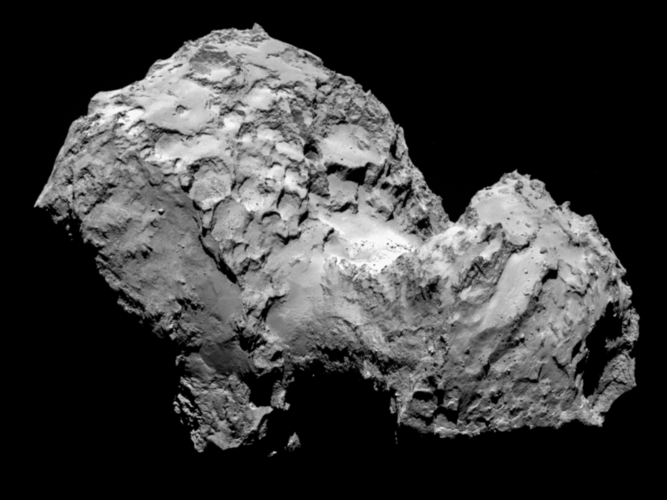
ESA’s Mercury mission BepiColombo also benefits from lessons learned from Rosetta, with aerospace manufacturer Astrium (later merged to form Airbus Defence and Space) building both missions. Like Hera, some of BepiColombo’s instruments are similar to Rosetta’s.
“There are entire teams that worked on Rosetta now working on BepiColombo,” explains BepiColombo co-Project Scientist Johannes. “For example, many involved in Rosetta’s VIRTIS imaging spectrometer instrument are now working on BepiColombo’s similar SIMBIO-SYS, and the magnetometer teams are similar on both missions. The planetary science community is quite small!”
Claire tells us about how Rosetta has helped prepare ESA for its Jupiter Icy Moons Explorer (Juice) mission, currently on its way to Jupiter.
“Rosetta is one of the most ambitious and challenging missions, also from a human perspective. It was a long project involving people spread all over the world, sometimes belonging to different generations, all learning to work together towards a common scientific goal. This was really inspiring and very good preparation for Juice, which will, like Rosetta, have a long cruise phase and will require similar interactions and preparation.”
Completing the jigsaw
Each of our Solar System explorers has different goals and carries different instruments. They ask different questions and give different answers. But ultimately, they each provide a piece of the puzzle in revealing the Solar System.
“Rosetta, Comet Interceptor and Hera are all missions to small bodies, which are kind of the leftovers of the formation of the Solar System. These bodies have not changed much since the Solar System formed,” says Michael. “Other missions investigate planets – the outcome of the formation process. They’re at the other end of the scale, seeing the most processed parts of the Solar System. Putting all of this together, we better understand how the Solar System formed and evolved.”
Johannes adds: “If you look at a comet, you get some information from far out of the Solar System. Then looking at Mercury, you see the planet closest to the Sun. So with both a comet and Mercury, we have the two ends of the spectrum – closest to and furthest from the Sun.”
“It’s important to study the extreme cases in order to understand the physics and what’s going on – it’s not enough to look only to Mercury, not enough to look only at comets – we need both to get the bigger picture.”
Patrick Martin has worked on two of ESA’s Mars missions since being Rosetta Mission Manager – Mars Express and ExoMars Trace Gas Orbiter (TGO). “These three missions contribute to the study of our Solar System as a whole, maintaining ESA’s presence and leadership in space science. Rosetta was a pioneering cometary science mission following in the footsteps of Giotto, while Mars Express and ExoMars TGO enable and foster ESA’s presence at Mars as part of the robotic exploration of the planet, before crewed flights become a reality.”
Timeline
2 March 2004 – Rosetta launch
20 January 2014 – Rosetta wakes up
6 August 2014 – Rosetta arrives at Comet 67P
12 November 2014 – Rosetta’s Philae lander lands on Comet 67P
30 September 2016 – Rosetta mission complete
19 June 2019 – Comet Interceptor selected as ESA mission
8 June 2022 – Comet Interceptor approved for construction



